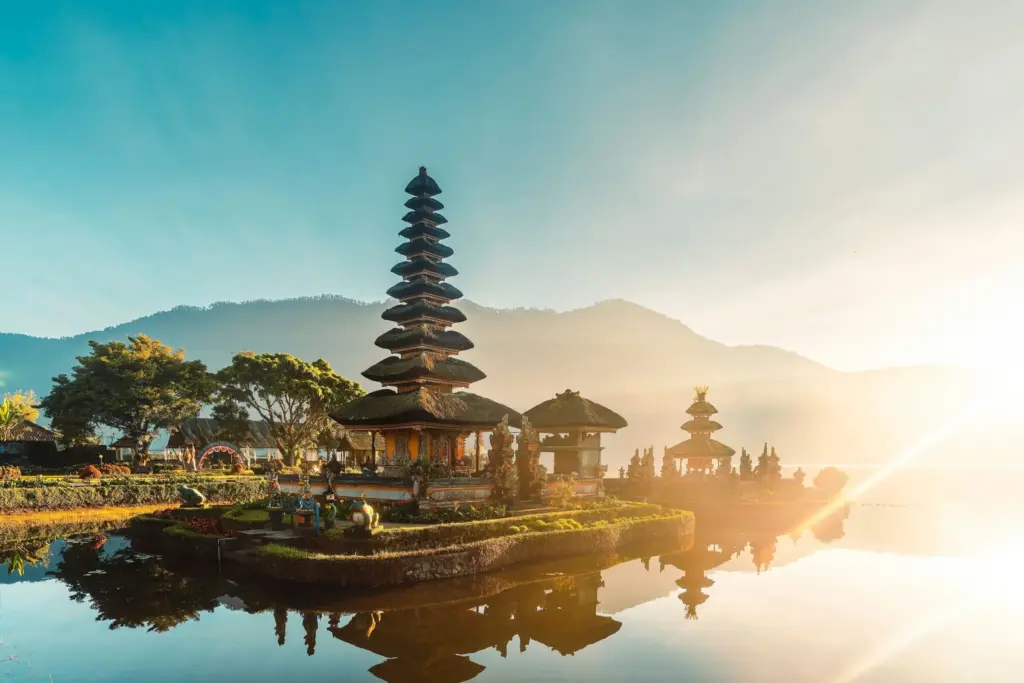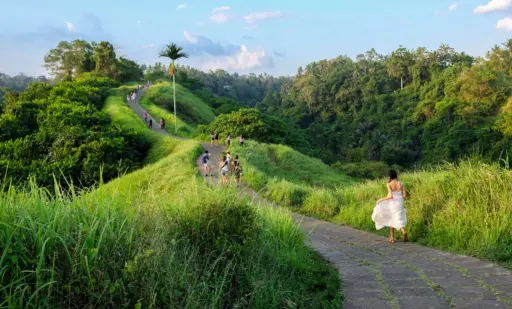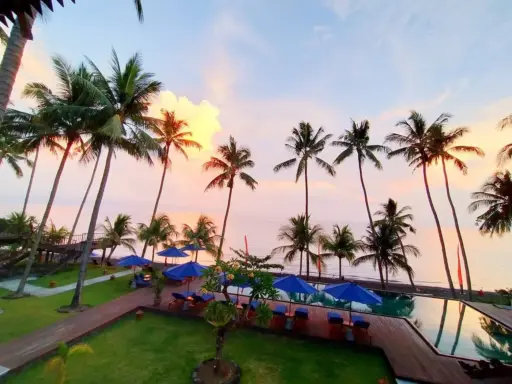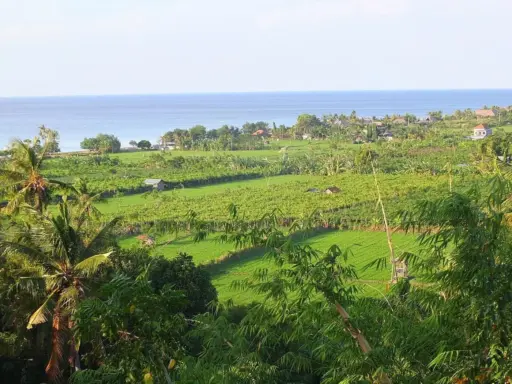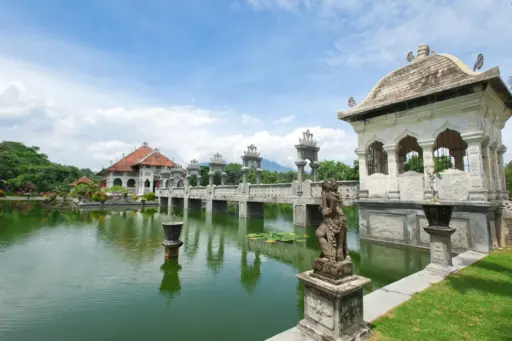Bali’s reputation as the “Island of a Thousand Temples” is well earned. These sacred places, called pura in Balinese, are more than just beautiful structures – they are the spiritual backbone of the island. Every village has at least three temples dedicated to the gods of creation, preservation, and destruction, while families have their own shrines at home.
Temples in Bali vary dramatically in size and setting. Some are small and tucked between rice terraces, others are sprawling complexes perched on cliffs or floating on lakes. Many date back centuries, with intricate stone carvings and towering meru (multi-tiered shrines) that reflect a deep connection to nature and the divine.
Visiting these temples offers more than just a glimpse into Balinese Hinduism; it’s a way to witness vibrant ceremonies, sacred dance performances, and traditional offerings. Whether you’re exploring iconic landmarks like Tanah Lot or seeking the quiet serenity of a mountain temple, the journey through Bali’s temples is as much a spiritual experience as it is a cultural one.
TEMPLE ETIQUITTE AND VISITOR TIPS
Balinese temples are active places of worship, and visitors are expected to respect the traditions:
· Dress appropriately – Wear a sarong and sash. Many temples rent or provide these.
· Mind your behaviour – Speak softly, avoid pointing your feet at shrines, and never climb on temple structures.
· Photography – Ask before photographing ceremonies or people in prayer.
· Ceremony etiquette – If invited to join, follow local guidance and avoid blocking participants.
· Women’s entry rules – Women who are menstruating should refrain from entering sacred areas.
PURA KAHYANGAN JAGAT – A SACRED GUARDIAN TEMPLE
Pura Kahyangan Jagat refers to a class of temples considered to be “universal” in Balinese Hinduism, meaning they are intended for all Balinese people regardless of caste or region. These temples are strategically located to protect the island spiritually, often honouring the gods of the mountains, sea, and sky.
Architecturally, Kahyangan Jagat temples feature intricately carved gates, courtyards with tiered shrines, and pavilions for offerings. They are often built on sites chosen for their alignment with sacred geography, such as mountain slopes or coastal promontories. Visiting one of these temples offers a profound experience – you are not just exploring history and art, but stepping into a living place of prayer that plays a vital role in Bali’s spiritual balance.
There are nine temples known as the Pura Kahyangan Jagat. The Temples are set up according to cardinal directions, with 8 of them related to wind direction and another in the centre:
· Pura Besakih – The Mother Temple (located in the centre)
· Pura Ulun Danu Batur – North
· Pura Pasar Agung – North East
· Pura Pucak Mangu – North West
· Pura Lempuyang Luhur – East
· Pura Goa Lawah – South East
· Pura Luhur Uluwatu – South West
· Pura Luhur Batukaru – West
· Pura Andakasa – South
FAMOUS TEMPLES IN BALI
Tanah Lot
Tanah Lot is one of Bali’s most recognisable icons, sitting on a rocky outcrop surrounded by the sea. At high tide, it becomes an island, while low tide reveals a path to its base.
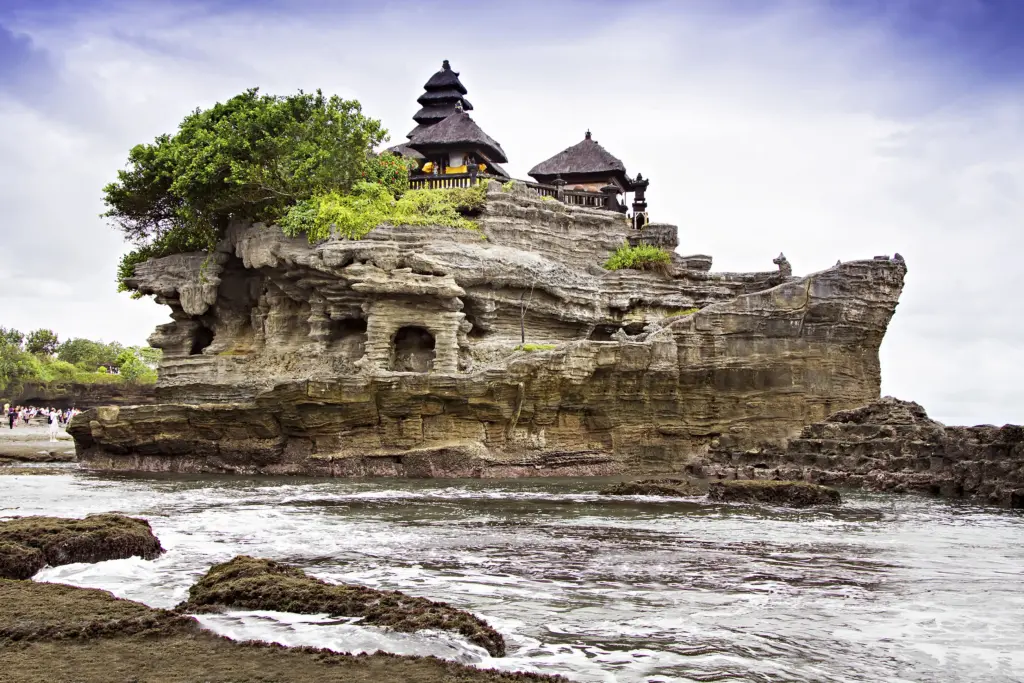
The temple is dedicated to the sea gods and is most magical at sunset when the silhouette glows against the horizon. Stalls selling souvenirs, cafes with ocean views, and cultural performances make it an engaging visit beyond its stunning photo opportunities.
Uluwatu Temple
Perched dramatically 70 metres above the Indian Ocean, Uluwatu Temple combines breathtaking scenery with deep cultural significance.
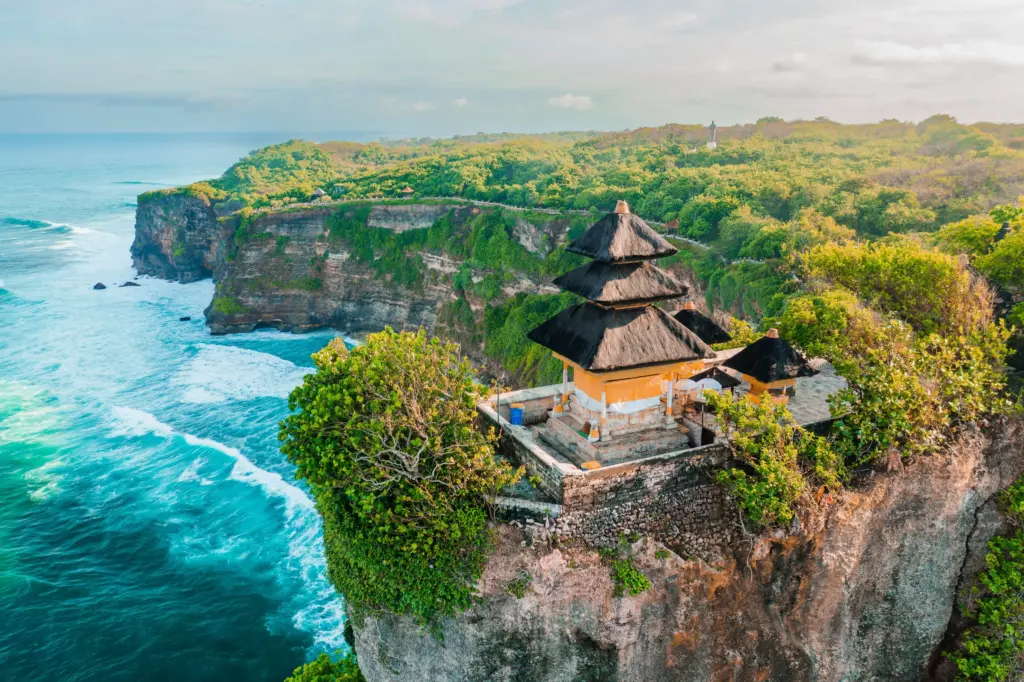
The temple is guarded by mischievous monkeys and is a prime spot to watch the Kecak fire dance at sunset. The cliffs surrounding Uluwatu offer panoramic views and an unmatched evening atmosphere, making it one of Bali’s most visited temples.
Besakih Temple
Located on the slopes of Mount Agung, Besakih is the largest and holiest temple on the island. Known as the “Mother Temple,” it consists of more than 80 smaller temples and shrines.
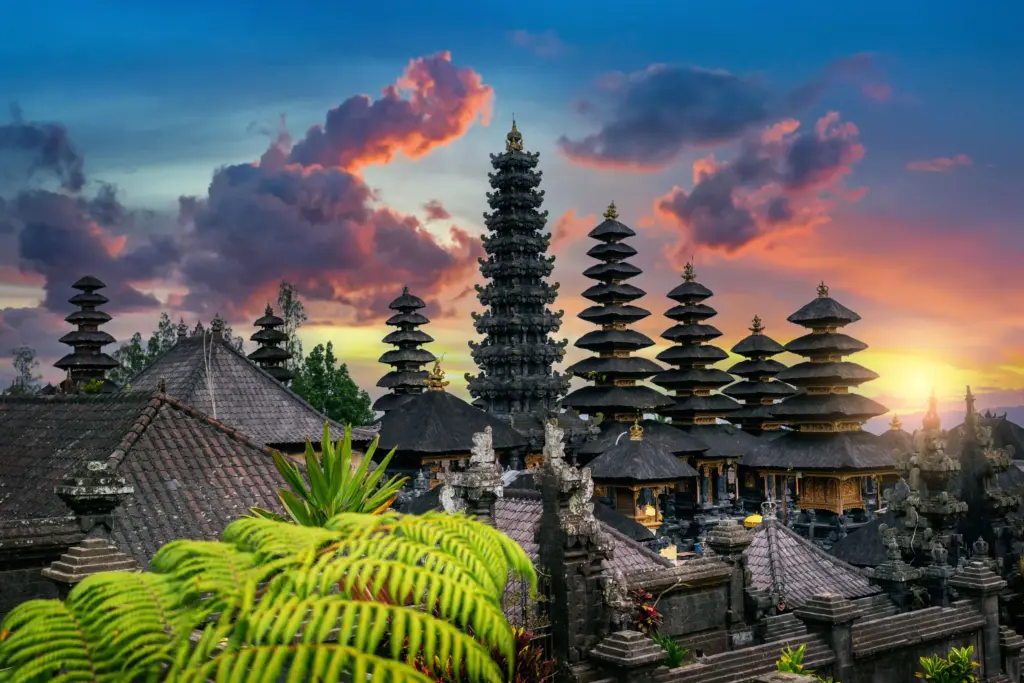
The backdrop of the volcano, combined with its centuries-old architecture, makes it an awe-inspiring site. Besakih is a pilgrimage destination for Balinese Hindus and the venue for some of the island’s most important ceremonies.
Tirta Empul
Famed for its holy spring water, Tirta Empul is a place where locals and visitors come for ritual purification. The temple’s bathing pools are fed by crystal-clear water believed to have healing powers.
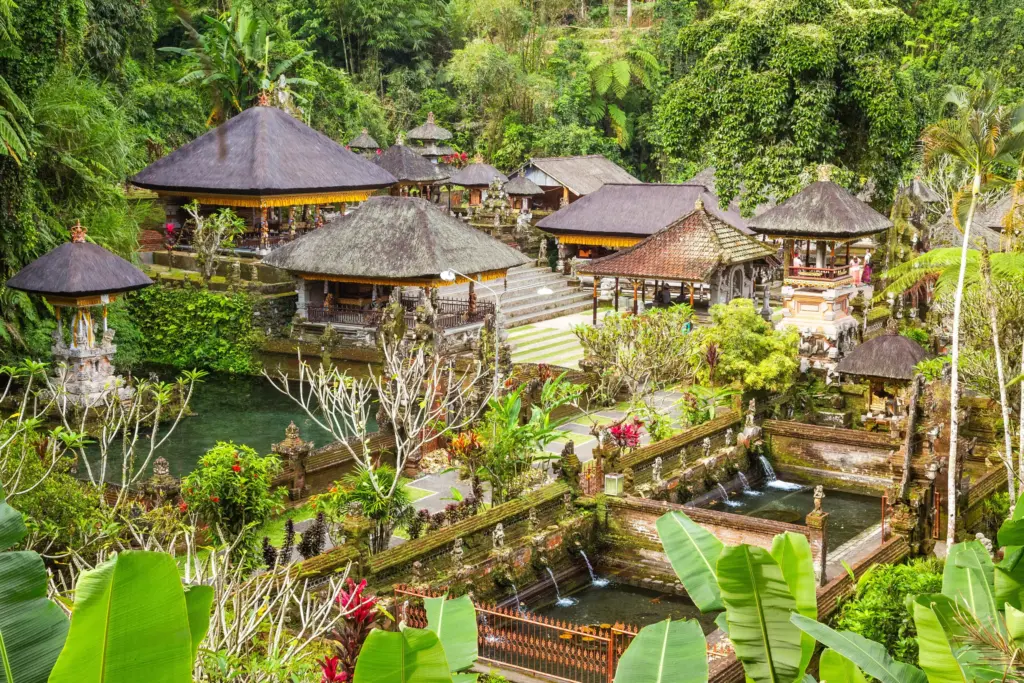
Joining the purification ritual is an immersive cultural experience that offers a deep connection to Balinese spirituality.
Ulun Danu Beratan Temple
Situated on Lake Beratan in Bedugul, Ulun Danu Beratan appears to float when the lake is full. This water temple is dedicated to Dewi Danu, the goddess of lakes and rivers.
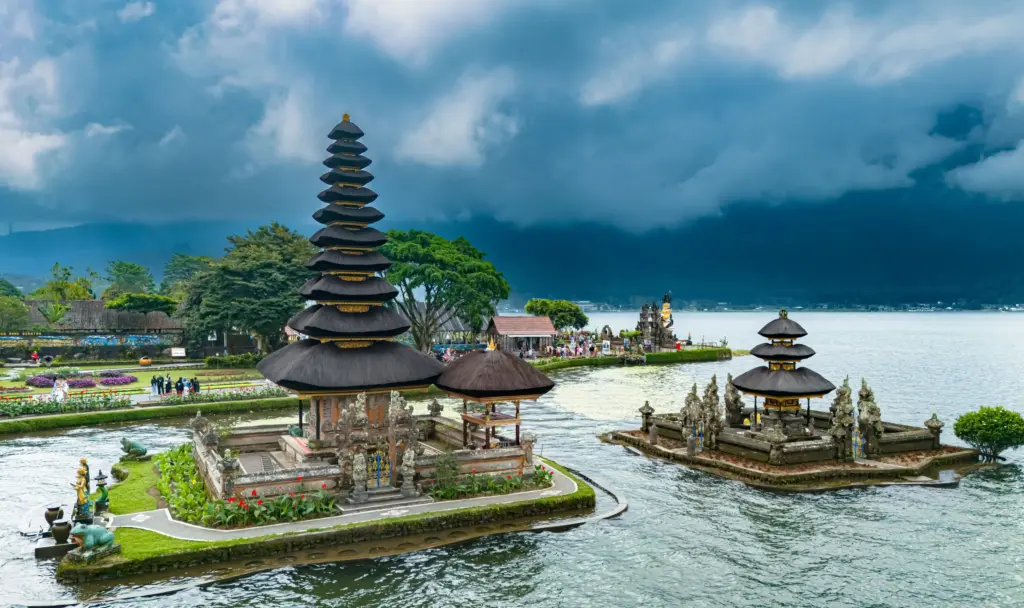
The cool mountain climate, flower gardens, and surrounding mist create an ethereal atmosphere, making it one of the most photogenic temples in Bali.
HIDDEN AND LESSER-KNOWN TEMPLES IN BALI
Gunung Kawi
An ancient temple complex featuring rock-cut shrines carved into cliffs, Gunung Kawi is surrounded by rice terraces and jungle. It is a peaceful escape for travellers seeking fewer crowds and a stronger sense of history.
Goa Gajah (Elephant Cave)
Dating back to the 9th century, Goa Gajah combines Hindu and Buddhist elements. The entrance is a carved demon mouth leading to meditation chambers and bathing pools.
Lempuyang Temple (Gates of Heaven Bali)
One of Bali’s oldest temples, Lempuyang is famous for its “Gates of Heaven” that frame Mount Agung perfectly on clear days. The temple requires a steep climb, but the views are worth the effort.
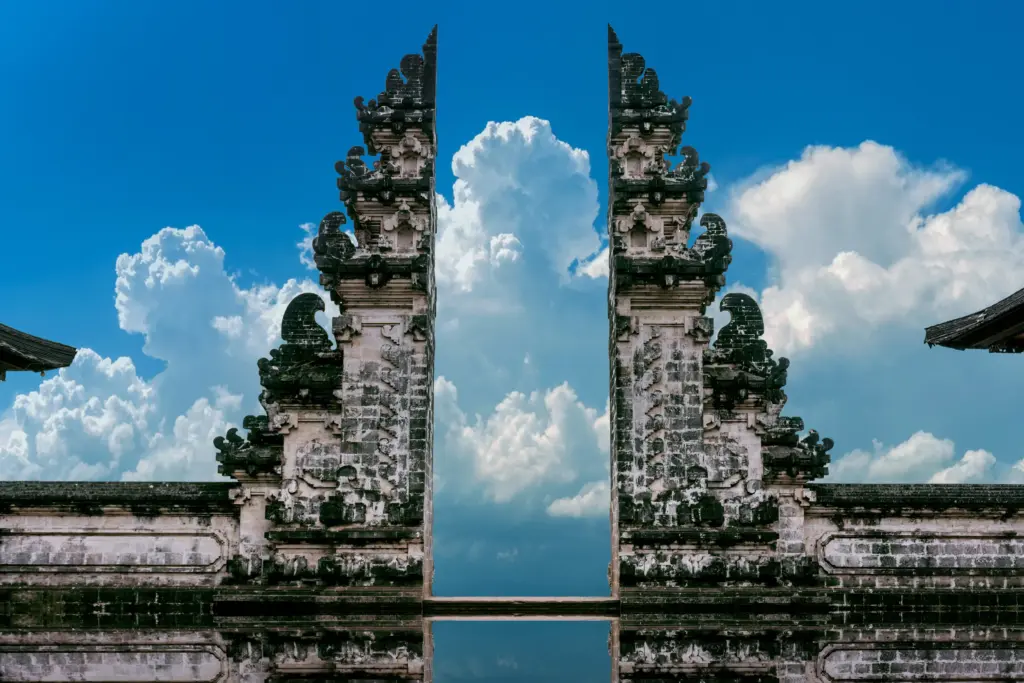
Pura Taman Ayun
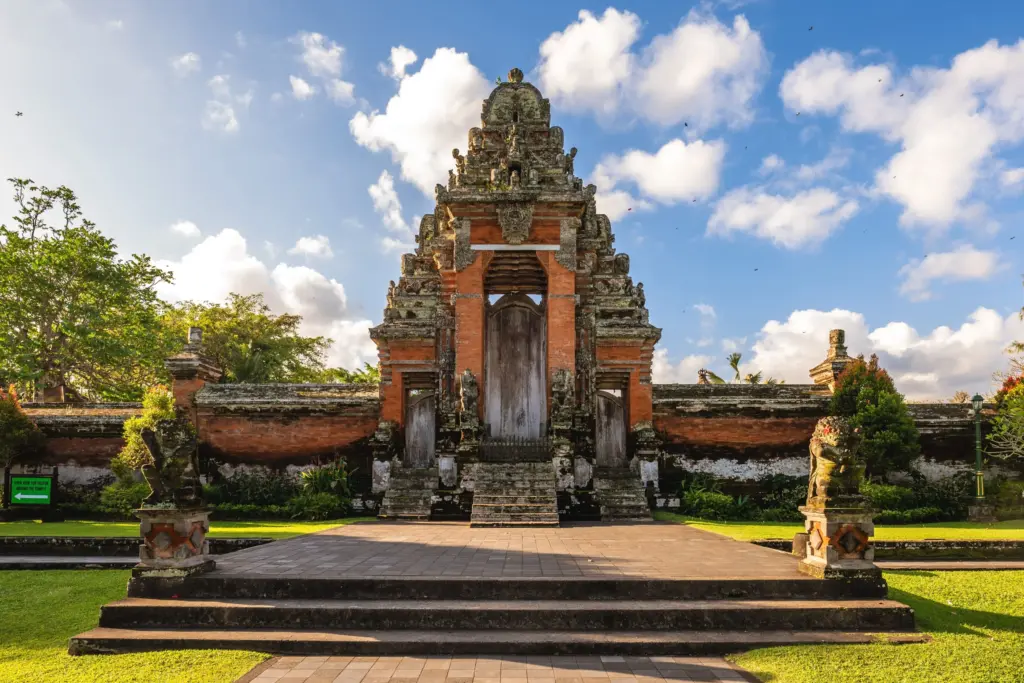
A former royal temple in Mengwi, Pura Taman Ayun is surrounded by lotus-filled moats. Its distinctive multi-tiered meru shrines and landscaped gardens make it a peaceful stop.
BEST TIME TO VISIT BALI’S TEMPLES
The best time to visit is during the dry season (May–September) when the weather is pleasant for walking and photography. Mornings offer cooler temperatures and fewer crowds, while sunsets are spectacular at coastal temples like Tanah Lot and Uluwatu. For a deeper cultural experience, time your visit with an odalan (temple anniversary) or major festivals like Galungan or Kuningan.
TEMPLE FESTIVALS AND CULTURAL EVENTS
Temple visits become even more special during festivals, with elaborate decorations, offerings, and performances. Key events include:
· Odalan – Temple anniversary, celebrated every 210 days.
· Galungan and Kuningan – Festivals marking the victory of good over evil.
· Nyepi Eve – Ogoh-Ogoh parades and purification rituals before the Balinese New Year.
HOW TO PLAN A TEMPLE-HOPPING ITINERARY
Temple hopping is one of the most rewarding ways to experience Bali’s cultural and spiritual richness. With temples spread across the island, planning your route will help you make the most of your time.
· South Bali – Start with Pura Luhur Uluwatu, perched dramatically on a cliff with sweeping ocean views, then head to Tanah Lot, one of Bali’s most photographed temples, especially at sunset. On the way inland, stop at Taman Ayun Temple, known for its lush gardens and multi-tiered shrines.
· Central Bali – Immerse yourself in the heart of the island’s spiritual life at Tirta Empul, where locals and visitors take part in water purification rituals. Combine this with Goa Gajah, the Elephant Cave with its intricate carvings, and Gunung Kawi, an ancient royal tomb complex set among rice terraces.
· East Bali – Make time for the iconic Lempuyang Temple (the “Gates of Heaven”), where the view frames Mount Agung perfectly. Continue to Besakih Temple, the “Mother Temple” of Bali, an expansive complex on the slopes of the volcano.
· North Bali – Visit Pura Ulun Danu Beratan, a serene water temple floating on Lake Beratan in Bedugul, and explore hidden hillside temples scattered through the highlands for a quieter, off-the-beaten-path experience.
For maximum flexibility, hire a private driver who knows the routes and can adapt your schedule to avoid peak crowds. This also allows you to travel comfortably between regions and enjoy spontaneous stops along the way.
Bali’s temples are far more than tourist attractions. They are living, breathing spaces where faith, tradition, and artistry come together in remarkable harmony. From the grand sprawl of Besakih to the intimate cliffside perch of Uluwatu, each pura offers a window into the island’s spiritual soul. Whether you are drawn by the intricate carvings, the breathtaking locations, or the vibrant ceremonies, temple visits connect you to Bali’s timeless rhythm of devotion. Plan your journey thoughtfully, respect local customs, and you will leave not only with stunning photographs but also with a deeper understanding of Bali’s enduring cultural heart. Wander Beyond Ordinary!
